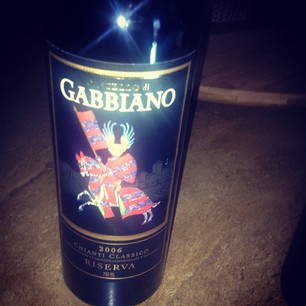We are making up a meal of bangers and mash for this evening. This is the first time cooking this dish at home and I am really looking forward to it tonight! And we are also looking forward to spring time, but still in the throes of winter and some warm mash in the tummy will suit me just fine this evening!
Several days ago, I wrote about a ‘medicinal Pinot Noir’ and described what a great Pinot Noir the Bannockburn is. My first introduction to bangers and mash was while living in Melbourne in 1998, and interestingly enough that was also my first introduction to the Bannockburn Pinot Noir! I can’t remember the vintage, but it was that tasting that encouraged me to buy two dozen of the 1998 Bannockburn Pinot Noir several years later and for which I am forever grateful.
When having bangers and mash, the mashed potatoes feature prominently as do the sausages (we will also have a side of salad with caramelized balsamic vinegar and olive oil dressing). The mash is creamy in texture and when mixed with butter and truffle oil, it deserves to be matched with a slightly lighter red wine such as a Pinot Noir or a Cabernet Sauvignon. Many Shirazes could overwhelm the bangers and mash and we would not want that. (However, the 1998 Tyrrell’s Vat 9 is such an elegant and slightly thinner textured Shiraz and would go beautifully!)
Therefore, I selected the 1997 Lindemans St George. I was tempted to open a bottle of the 1996 Lindemans St George which is even better than the 1997, but that seemed too elegant for a simple meal of bangers and mash. The 1997 St George would be considered an off year compared to the brilliant 1996 and 1998 Lindemans St George. One of the reason I choose the 1997 Lindemans St George is I thought it was more suitable than the 1996 or 1998 Lindemans St George when matched to the food, and the other is that it will not last as long and I have about two dozen of the 1997 Lindemans St George and only four of the 1996 and six of the 1998 Lindemans St George which will last another six to ten years. I am guessing I need to drink all of my 1997 Lindemans St George within the next several years.
When decanting the wine, I noticed that the tannins were well deposited on the side of the bottle and there was a lot of tannin. The wine seemed a bit tight upon first opening it, but after 20 minutes, it opened up and became smoother. This wine is still surprisingly robust, yet very mellow with little fruit flavours, maybe just a hint of blackberry. It does have some light smokey and leathery smells. The grapes come from the Coonawarra region in South Australia where a number of great Cabernet Sauvignons are grown. Overall, this is a very nice wine, but not a great wine.
The wine should match up very well with both the mash and the sausages. I would explain what flavoring is in the sausages, but frankly we forgot what type of sausages they were when we froze them, so will have to find out upon eating them! But I know the wine on its own is great to drink and it is a great match for the buttery mash with truffle oil, so I expect the meal over all to be outstanding!







